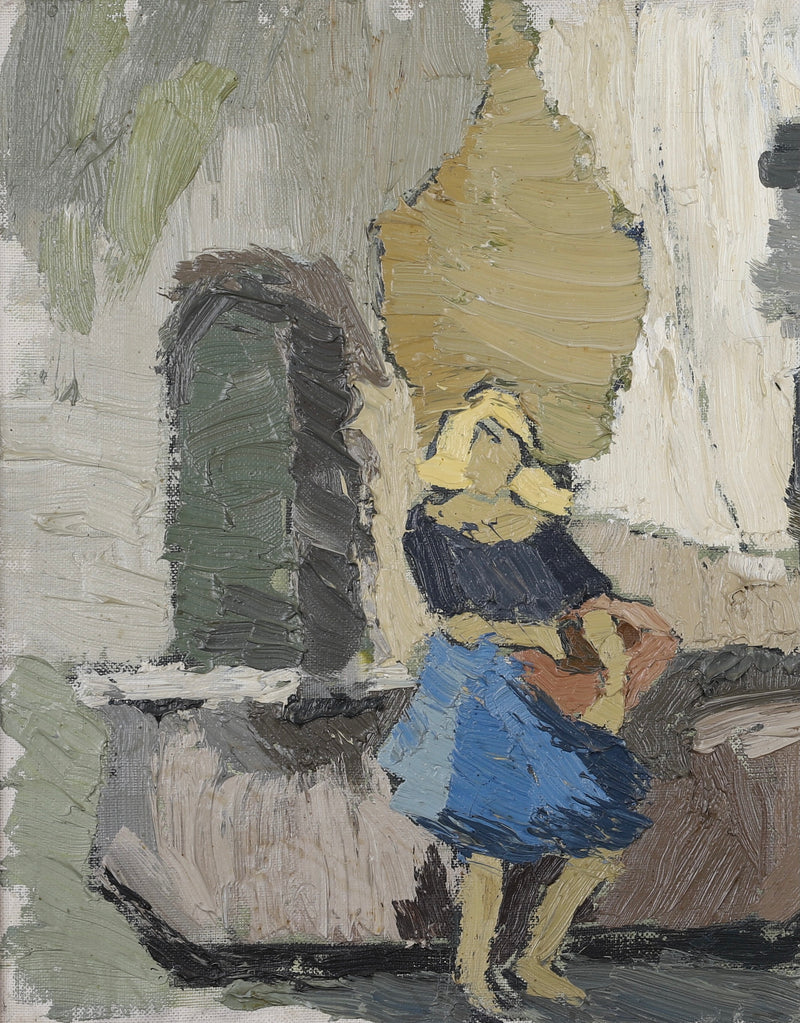How Figurative Oil Painting Changes Traditional Artistic Expression
How Figurative Oil Painting Changes Traditional Artistic Expression
Blog Article
The Duty of Feeling and Expression in Figurative Oil Paint: A Thorough Analysis of Subject and Make-up
The interplay of emotion and expression in metaphorical oil painting acts as an important lens whereby one can take a look at the detailed partnership between subject issue and structure. Artists harness different methods, from shade option to brushstroke characteristics, to grow psychological vibration within their works. This nuanced orchestration not only forms visitor assumption however additionally welcomes a much deeper inquiry into just how these aspects integrate to reflect the intricacies of human experience. As we explore this abundant surface, one must consider just how details study illuminate the wider ramifications of these imaginative selections.
Comprehending Feeling in Art
Feeling in art works as an effective avenue for expression, enabling artists to share complex sensations through their work. In figurative oil paint, this emotional depth is usually depicted via the representation of the human number, recording the nuances of human experience. The option of topic, shade combination, and brushwork all add to the psychological resonance of an item.
Artists regularly bring into play individual experiences, societal concerns, or global styles to stimulate feelings in the visitor. A picture might mirror vulnerability, while a vibrant number in motion can represent liberty or chaos. These emotional threads connect the customer to the artwork, promoting a discussion that transcends the aesthetic medium.
In addition, the interplay between light and shadow can enhance psychological strength, directing the customer's look and attracting interest to certain aspects within the make-up. The usage of appearance in oil painting additionally adds layers of intricacy, inviting a responsive response that enhances the emotional experience. In general, comprehending feeling in art is important for valuing the nuances that identify figurative oil painting, as it changes plain depiction into an extensive expedition of the human condition.
Key Components of Make-up
In the realm of figurative oil paint, the structure offers as the underlying framework that arranges aesthetic elements and boosts the psychological narrative. Crucial components of structure consist of equilibrium, contrast, prime focus, and rhythm, each adding to the total impact of the art work.
Balance refers to the distribution of visual weight within the paint, which can be attained through unbalanced or symmetrical arrangements. A well-balanced structure provides security, allowing the audience to involve with the item harmoniously - figurative oil painting. Comparison, on the various other hand, involves juxtaposing various aspects, such as light and dark or warm and awesome colors, to direct the viewer's eye and stimulate emotional feedbacks
The centerpiece is critical, as it routes interest to the most substantial part of the painting, often highlighting the emotional core of the narrative. With methods like color saturation or placement, musicians can stress this area properly. Finally, rhythm refer to the repetition of aspects, creating a sense of activity and circulation throughout the composition. By masterfully integrating these crucial elements, artists can craft engaging and mentally resonant figurative oil paints that mesmerize and involve their audience.
Subject and Its Effect
Subject matter plays a crucial role in metaphorical oil painting, as it not only functions as the structure for the story yet likewise forms the customer's analysis and psychological interaction with the artwork. The choice of topic-- be it a more singular figure, a team dynamic, or a thematic depiction-- directly affects the psychological ambience shared to the target market.

As an example, portraits frequently evoke personal connections, revealing the complexities of human expression and character, while scenes depicting communal activities can produce a sense of belonging or nostalgia. The historic and social context of the subject matter enhances the audience's understanding, motivating much deeper reflections on social standards, values, and the human condition.
Different subjects likewise produce varying degrees of engagement; a significant dispute shown with figures in stress might generate feelings of anxiousness or empathy, while peaceful landscapes can conjure up serenity and consideration. Ultimately, the impact of subject in metaphorical oil paint is profound, as it serves as a channel for emotional vibration, guiding the visitor's reaction and analysis, and fostering a link in between the artwork and the viewer. This interplay is necessary for the effective communication of the artist's intent.
Strategies for Evoking Feelings
The efficiency of figurative oil paint in sharing emotions is considerably affected by the methods used by the artist. Among the most important methods is using shade concept, where the tactical selection of shades can evoke specific emotional reactions. Warm shades, such as reds and oranges, commonly generate sensations of interest or hostility, while cooler tones like blues and eco-friendlies have a tendency to stimulate calmness or unhappiness.
An additional important technique is the control of light and darkness, referred to as chiaroscuro. This approach enhances the three-dimensionality of numbers, developing remarkable contrasts that can intensify emotional deepness. The placement of light can direct viewers' emotions, highlighting particular aspects of the composition.
Brushwork also plays a vital function; loose, meaningful strokes can convey energy and spontaneity, whereas smoother techniques might suggest peace or precision. The setup of topics within the composition can affect psychological influence. Close proximity can recommend affection, while range might suggest seclusion.
Eventually, the mix of these techniques makes it possible for musicians to craft narratives that resonate with the viewer, changing a simple visual experience into an evocative emotional trip. - figurative oil painting

Study of Remarkable Works
Analyzing significant works of metaphorical oil painting reveals just how site here numerous methods are employed to evoke effective feelings. One exemplary situation is Edvard Munch's "The Scream," where the altered figure and swirling background share existential fear. Munch's use of shade-- vivid oranges and deep blues-- increases the emotional impact, showcasing exactly how palette choices can form viewer experience.
One more considerable job is Pablo Picasso's "Les Demoiselles d'Avignon." Right here, fragmented types and bold brushstrokes reflect a turbulent psychological landscape, testing conventional representations of the female number. Picasso's ingenious structure not just catches the audience's interest but also invites reflection on styles of identity and sexuality.
Additionally, Frida Kahlo's "The 2 Fridas" uses a poignant expedition of duality and self-identity. The contrasting figures, connected by a common heart, exemplify Kahlo's emotional deepness and personal narrative. figurative oil painting. Her thorough focus to detail and symbolic components serve to engage audiences on a natural level
These case studies emphasize the extensive connection in between emotion and structure in metaphorical oil painting, exposing exactly how artists harness strategy to interact complex feelings and narratives that reverberate across time and society.

Conclusion
Finally, the interplay of feeling and expression in metaphorical oil see this site paint substantially enhances the customer's experience and analysis of the artwork. With a careful choice of subject and compositional techniques, artists convey extensive narratives that resonate on both universal and personal levels. The application of shade theory, chiaroscuro, and brushwork more enhances psychological deepness, transforming each canvas right into an effective representation of the complexities of the human experience.
In figurative oil paint, this emotional deepness is typically depicted via the depiction of the human figure, catching the nuances of human experience.Furthermore, the interaction between light and shadow can enhance emotional strength, leading the customer's stare and drawing interest to certain elements within the structure. The usage of texture in oil paint better adds layers of intricacy, welcoming a tactile feedback that enhances the emotional experience.The focal factor is vital, as it directs focus to the most significant part of the painting, usually highlighting the psychological core of the story. Inevitably, the impact of subject matter in metaphorical oil paint is extensive, as it serves as a channel for emotional vibration, guiding the visitor's action and interpretation, and promoting a connection in between the artwork and the observer.
Report this page